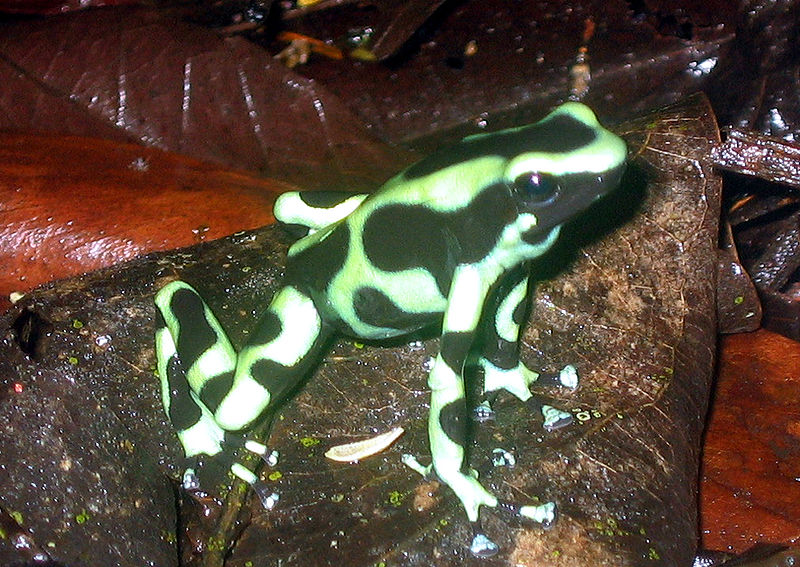 Poison Frogs (also known as Dart or Arrow Poison Frogs) exhibit an amazing array of colors and patterns – some so spectacular as to appear unreal. What’s more, they are active by day, exhibit complex social behaviors, and care for their tadpoles in “mammal-like” fashion…and are not at all shy about doing so. Small wonder they are among the most desirable of all amphibian pets! Once considered delicate captives, Poison Frogs are now regularly bred in captivity and may live to age 15 or beyond.
Poison Frogs (also known as Dart or Arrow Poison Frogs) exhibit an amazing array of colors and patterns – some so spectacular as to appear unreal. What’s more, they are active by day, exhibit complex social behaviors, and care for their tadpoles in “mammal-like” fashion…and are not at all shy about doing so. Small wonder they are among the most desirable of all amphibian pets! Once considered delicate captives, Poison Frogs are now regularly bred in captivity and may live to age 15 or beyond.
The following information can be applied to most available species, including Blue, Green and Black, Strawberry, Golden, and Phantasmal Poison Frogs. However, details vary; please write in for information concerning individual species.
Natural History
These 0.75 – 2 inch-long beauties are native to Central and South America. Identification by physical appearance alone is difficult, as some species exhibit a great many color variations. Their taxonomy is in flux, with various authorities recognizing between 180 and 300+ species. Read More »
 That Reptile Blog – Reptile, Amphibian and Exotic Pet Care and Information
That Reptile Blog – Reptile, Amphibian and Exotic Pet Care and Information

